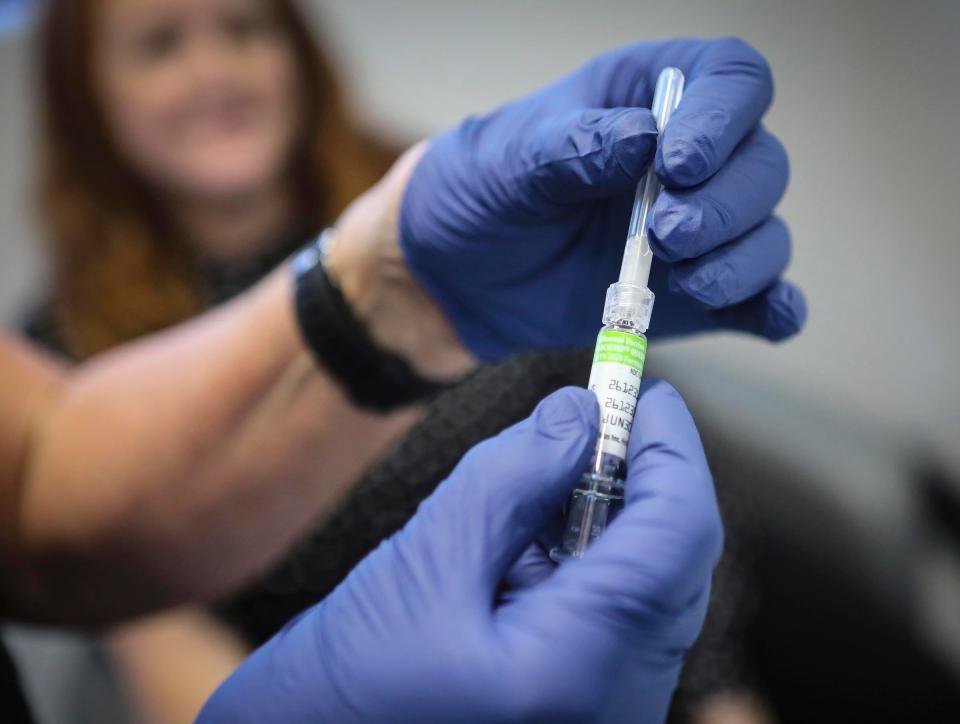Which shot is most urgent? The latest on flu, RSV, norovirus, COVID in Palm Beach County
The only flu strain known to cause pandemics is spreading faster in Palm Beach County at the same time a respiratory illness that is the most dangerous to elders and babies is plunging, the latest sewage tests show.
Influenza A concentrations have more than tripled in recent weeks, wastewater testing from the Jupiter-area Loxahatchee River District reveals. The strain’s milder cousin, Influenza B, is also on the rise. Respiratory syncytial virus, or RSV, meanwhile has plunged.
And concentrations of norovirus, which attacks the stomach and intestines, remain far lower than what was recorded almost a year ago. COVID-19 levels remain lower than in summer.
Previously: RSV and the only flu strain known to cause pandemics are spreading in Palm Beach County

How do the flu readings compare with last year?
Testing conducted Friday by the national WastewaterSCAN initiative found an average of about 5.5 Influenza A particles per milligram of district sewage up from about 1.6 per milligram Sept. 25. Influenza A is the only flu virus known to cause pandemics, the Centers for Disease Control and Prevention says.
But last week’s readings are well below the 21.5 parts per milligram logged Dec. 26, 2022. WastewaterSCAN started testing district sewage Dec. 2 last year.
Influenza B has shot up again after a big plunge. WastewaterSCAN found an average of 4.6 virus particles per milligram in test results released Friday. That’s three times higher than Oct. 9, but it was 45% lower than Sept. 25.
Also read: Latest COVID wave less deadly but some Palm Beach County sewage tests indicate another uptick
Big plunge on RSV found in sewage, but what's up with COVID?
Test results from Friday also found an average of 6.4 RSV particles per milligram, down 67% from Oct. 4.
About 4,337 norovirus particles per milligram of sewage were found Friday. Stomach bug concentrations have hovered around 4,000 to 6,000 parts per milligram since Sept. 6.
COVID appears to still be declining, too. Friday’s test results show an average of 30.2 coronavirus particles per milligram of sewage, down 49% from Sept. 13 and 78% from the summer peak recorded Aug. 2.
Coronavirus testing from Boston-based Biobot Analytics found about 197 particles per milliliter in results released Oct. 10, down 28% from Sept. 11.
Chris Persaud is The Palm Beach Post's data reporter. Send tips to cpersaud@pbpost.com
This article originally appeared on Palm Beach Post: The latest on flu, RSV, norovirus, COVID in Palm Beach County

